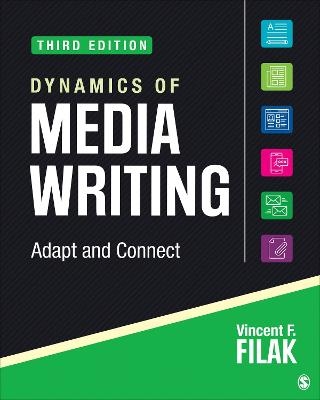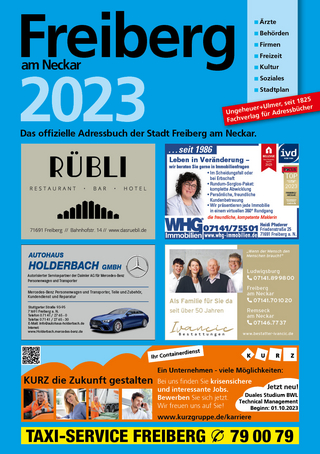
Dynamics of Media Writing
SAGE Publications Inc (Verlag)
978-1-5443-8568-6 (ISBN)
Vincent F. Filak, Ph.D., is an award-winning teacher and scholar who serves as a professor of journalism at the University of Wisconsin Oshkosh, where he primarily teaches courses on media writing and reporting. Prior to his arrival at UWO, he served on the faculty at Ball State University and also taught courses at the University of Missouri and the University of Wisconsin–Madison. He also previously worked for the Wisconsin State Journal and the Columbia Missourian newspapers. He was also unanimously voted and selected as the next editor of Journalism & Mass Communication Educator by the Association for Education in Journalism and Mass Communication. The Associated Collegiate Press honored him as part of the organization’s inaugural class of Pioneer Award Winners in 2022. The Scholastic Journalism Division of the Association for Education in Journalism and Mass Communication presented him with the Educator of the Year award in 2021, a year after he was honored by the National Society of Leadership and Success with an Excellence in Teaching award. In 2019, he received the Friend of KEMPA award for his work with high school journalism students through the Kettle Moraine Press Association. In addition, he has received awards from the College Media Association (CMA) and the National Scholastic Press Association for his work as a college media adviser and a mentor to high school journalists. As a scholar, Filak has received thirteen top conference paper awards, including those from the Association for Education in Journalism and Mass Communication, the Broadcast Education Association, and the International Public Relations Society of America. He has published more than thirty scholarly, peer-reviewed articles in top-tier journals, including Journalism and Mass Communication Quarterly, Journalism and Mass Communication Educator, the Newspaper Research Journal, the Atlantic Journal of Communication, Journalism: Theory, Practice and Criticism, the Howard Journal of Communication, Educational Psychology, and the British Journal of Social Psychology. He is also the winner of CMA’s Nordin Research Award, which goes to the best research paper completed on a topic pertaining to media advisers within a given year. He has published several textbooks in the field of journalism, including Dynamics of Media Writing (SAGE), Dynamics of News Reporting and Writing (SAGE), Dynamics of Media Editing (SAGE), Convergent Journalism (Focal), and The Journalist’s Handbook to Online Editing (with Kenneth Rosenauer; Pearson). He also blogs about media-related topics at DynamicsOfWriting.com. xxivHe lives outside Auroraville, Wisconsin, with his wife, Amy, and their daughter, Zoe.
Preface
Acknowledgments
About the Author
PART I. THE BASICS YOU NEED, REGARDLESS OF FIELD
Chapter 1. Know Your Audience
How to Define an Audience
Key Questions to Ask in Serving Your Readers
What Attracts an Audience?
What Audiences Need to Know and How to Make Them Care
The Big Three
Chapter 2. Being Accurate, Relying on the Facts
Why Is Journalism Such a Picky Field?
Why Media Professionals Matter More Than Ever
Making Sure You Are Sure
Examining the Broader Issues
The Big Three
Chapter 3. Grammar, Style and Language Basics
Why Do Grammar and Style Matter?
Sentence Structure
Sentence Length
Read Your Work Aloud
How to Keep Writing Tight and Right
The Big Three
Chapter 4. Basic Media Writing
The “Killer Be’s” of Good Writing
The Inverted Pyramid
Leads: The Prominence of Importance
Types of Leads
Problematic Leads and Potential Fixes
How to Order the Rest of Your Pyramid
The Big Three
Chapter 5. Interviewing
Interview Preparation
Places to Dig
Getting the Interview
Interacting With Your Source
Interviewing via Email or Text
Interviewing for Multiple Media
The Questions
Interview Flow
Silence as an Ally
The Nonverbal Approach: How to Ask a Question Without Asking
The End of the Interview (Almost)
Follow-Up Interviews
The Big Three
Chapter 6. Writing for Websites and Blogs
Working on the Web
Blogging
Best Blogging Practices
How to Build a Quality Blog Post
Linking and Other Interactive Elements
Engaging Readers
The Big Three
Chapter 7. Social Media
What Does Social Media Do?
Why Is Social Media Valuable?
Social Media Tools
How to Avoid #Fail
Building a Social Media Audience
The Big Three
Chapter 8. Law and Ethics in Media Writing
The First Amendment
Libel
Legal Defenses Against Libel
Getting SLAPP-ed Anyway
Copyright
How to Avoid Copyright Infringement
Ethics and the Media
Ethical Concerns
How to Work Through Ethical Dilemmas
Determining Your Own Approach to Ethics
The Big Three
PART II. FOCUS ON NEWS MEDIA
Chapter 9. Reporting: The Basics and Beyond
Event Coverage
Preparing for the Event
How to Cover the Event
News Reporting Beyond the Event
Beats
Features
Profile Writing
Localizations
Obituaries
The Big Three
Chapter 10. Writing for Traditional Print News Products
Nuances for Print Writing
Attributions
Expanding the Inverted Pyramid
The Big Three
Chapter 11. Writing for Broadcast
Nuances for Broadcast Writing
Structure
Integrating Additional Elements
Types of Stories
Polishing Your Final Piece for Delivery
The Big Three
PART III. FOCUS ON MARKETING MEDIA
Chapter 12. Public Relations
Defining PR
Types of PR Writing
Keys to PR
Why the Media Matters
The Big Three
Chapter 13. Advertising
Defining Advertising
The Creative Brief
Message Formation
Writing in Advertising
The Big Three
Chapter 14. Marketing
Brands and Branding
Campaigns Versus Brands
Useful Marketing Platforms and Tools
Copywriting for a Brand
Ways to Work With and for Your Readers
Writing Creatively for Marketing
The Big Three
Glossary
Index
| Erscheinungsdatum | 19.08.2021 |
|---|---|
| Verlagsort | Thousand Oaks |
| Sprache | englisch |
| Maße | 203 x 254 mm |
| Gewicht | 660 g |
| Themenwelt | Sozialwissenschaften ► Kommunikation / Medien ► Allgemeines / Lexika |
| Sozialwissenschaften ► Kommunikation / Medien ► Journalistik | |
| Wirtschaft ► Betriebswirtschaft / Management ► Marketing / Vertrieb | |
| ISBN-10 | 1-5443-8568-4 / 1544385684 |
| ISBN-13 | 978-1-5443-8568-6 / 9781544385686 |
| Zustand | Neuware |
| Haben Sie eine Frage zum Produkt? |
aus dem Bereich


